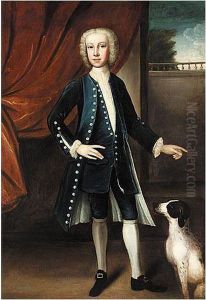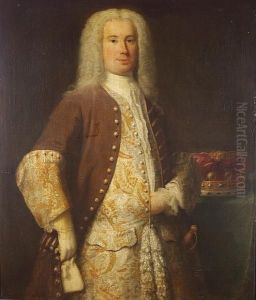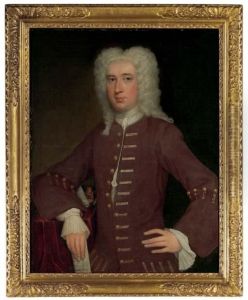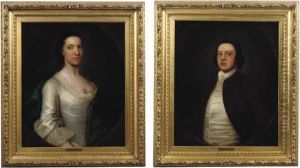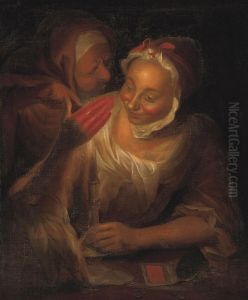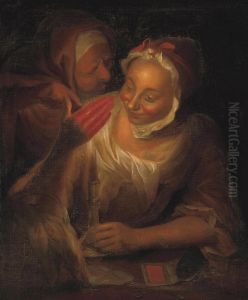John Theodore Ii Heins Paintings
John Theodore Heins, also known as John Theodore II Heins, was a German-born British portrait painter. Born in 1697 in the city of Lübeck, Germany, Heins later moved to England where he would establish his career and reputation as an artist. His exact date of immigration to England is not well-documented, but it is known that by the 1720s, he had settled in Norwich, which at that time was a prosperous and culturally vibrant city, second only to London in importance.
Heins's artistic talent began to flourish in Norwich, where he became a prominent figure in the local art scene. He is best known for his portraits, which were executed in a style that shows the influence of Godfrey Kneller, the leading portraitist in England at that time. Heins’s portraits are characterized by a clear, realistic representation of his subjects, often set against muted backgrounds which serve to highlight the figures themselves.
During his career, John Theodore Heins painted many members of the local gentry and their families, as well as prominent citizens in Norwich and its surroundings. His work was very much in demand, and he was able to build a successful practice. Heins contributed to the diffusion of the portrait style of the early Georgian period into the regions outside London. He also played a role in the artistic life of Norwich, which would later become known for the Norwich School of painters, although this group was founded after Heins's death.
Heins's legacy is comprised not only of his own work but also of his artistic progeny. His son, John Theodore Heins Junior, followed in his father's footsteps and became a portraitist as well. The family's artistic tradition helped pave the way for the later development of the Norwich School.
John Theodore Heins died in 1756 in Norwich. His body of work remains as a testament to his skill and as an important part of the cultural heritage of the period. Although not as widely known as some of his contemporaries, Heins's portraits provide valuable insights into the provincial art world of 18th-century Britain and the social history of the time.
